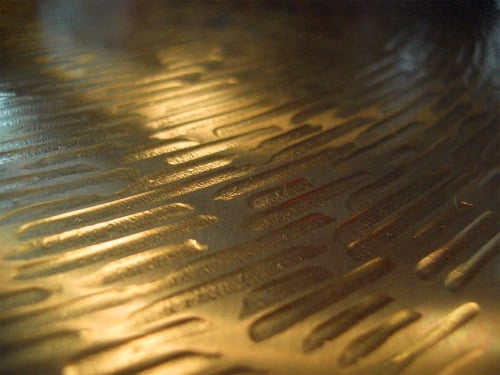The recent surge in the price of gold has the CFTC considering placing restrictions on speculative trades in gold, silver, and copper.
Federal regulators are weighing whether to restrict the volume of speculative trading in metals futures, as gold prices have surged in an investor fever.
The Commodity Futures Trading Commission is taking up the question, a new twist for an agency with a hands-off approach in recent years toward the financial markets.
The CFTC is holding a public meeting Thursday to gather views from exchanges, banks and traders on restricting the amount of trading in gold, silver and copper futures by market players who are solely financial investors.
The discussion also will focus on how transparent prices are in the metals futures markets and how they are influenced by developments in the physical markets.
The agency in January took a first step aimed at reining in oil speculation, proposing new limits on trading in energy futures by Wall Street firms and other market players. One of the five CFTC commissioners, at least, wants caps on speculative trading also extended to the markets for agricultural products and metals — in a comprehensive effort to prevent market manipulation.
"I strongly support thoughtful position limits in the metals complex," Commissioner Bart Chilton, a former Clinton administration official, said recently.
Yet there appears to be scant support for the move among Chilton's colleagues, who have not voiced positions publicly.
Gold may glitter but it lacks the political heat generated by talk of limits on oil speculation as consumers get squeezed at the gas pump and airlines see their fuel bills rocket in an already tough business climate.
In September 2008, at the height of the financial crisis, the House ignored a veto threat from President George W. Bush and approved measures aimed at curbing speculation in oil markets.
The price of gold leaped 24 percent last year, trading above $1,000 an ounce and making experts wonder if it might become the next bubble, in the wake of the mortgage and credit crises. Some forecasters see it going to $1,200, $1,500 or beyond, unless the buying frenzy halts.
Gold first reached $1,000 in March 2008, soon after the collapse of investment bank Bear Stearns and mounting anxiety over the stability of the financial system. Then, in the Gold Rush of '09, investors snapped up gold to protect themselves against the falling dollar. Currencies have been weak investments around the world because of record-low interest rates stemming from the financial crisis.
Gold for April delivery finished at $1,088.80 an ounce in U.S. trading Wednesday. That was actually its lowest price in more than a month, a $14.90 decline from the day before. Gold prices came under pressure after the dollar surged because of the latest debt problems in Europe. Silver and copper followed gold lower.
The Wall Street banks that invest in and manage billions in commodities, and reap handsome profits from the business, argue that trading by speculative investors helps inject liquidity into markets and to establish accurate pricing. Imposing new volume limits on futures contracts will drive business overseas into less tightly regulated markets, they say.
Experts and economists, meanwhile, are divided on whether speculative trading in the futures markets fans price volatility.
Among those speaking at the CFTC's meeting Thursday are officials of CME Group Inc., owner of the Comex and the New York Mercantile Exchange, where metals futures are traded; the London Metal Exchange; NYSE Euronext Inc.; HSBC Bank USA; Barclays Capital, and Triland USA, a division of Mitsubishi Corp.







